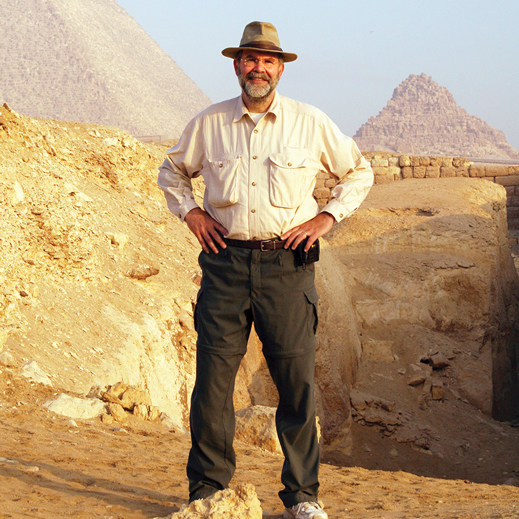Alumnus Inventor Seeks to Demystify the Great Pyramids
-
-
slice.mit.edu
Filed Under
Recommended

Developing an early video game gave Glen Dash '75, '81 his start as an inventor, and an archaeological dig unearthed his current passion. Now, with his wife and daughter, he’s closing in on the secrets of the ancient Egyptian pyramids.
When Dash was a kid in suburban Chicago, he idolized the scientists in a Time-Life book series. “In the one called The Engineer, there was a picture of A. P. French teaching in 10-250,” Dash remembers. When Dash got to MIT himself, he studied computer science and engineering and joined Professor Yao Tzu Li’s MIT Innovation Center.
There he and friends created a low-cost home video game, TV Tennis. Executive Games licensed it, and Dash worked as chief engineer for the company until, in 1977, the video game industry briefly collapsed when obsolete games flooded the market. After earning a management degree at Sloan, Dash became an expert in engineering devices—such as early microwaves—so that they would comply with state and federal rules and standards. Eventually he founded three companies that dealt with the testing and certification of electronic devices.
While at MIT, Dash was able to pursue another interest sparked by that Time-Life series—the study of past civilizations. He took an anthropology class and then accompanied a Harvard archaeology research party to a remote valley in Iran, where he lost 15 pounds living on cucumbers, rice, and goat meat slathered in Tabasco sauce. An adventure, Dash says, is “misery recalled fondly.”
At age 43, he was ready for more adventure. He sold his companies and patents, and in 1996 he launched the nonprofit Glen Dash Foundation for Archaeological Research, which applies remote sensing and advanced topographic survey techniques to archaeological problems. His projects have focused on sites in Egypt, Greece, Cyprus, and the United States.
Dash, who usually spends a couple of months each year in the field with magnetometers and ground-penetrating radar equipment in tow, has discovered a lost harbor, which had been concealed as coast-lines changed, and mapped buried cities. His wife, Joan Dash, who has a Harvard PhD in microbiology, is the foundation’s soil scientist. Their 28-year-old daughter, Rebecca, now a physician’s assistant, accompanies her parents every year as a surveyor. Most recently, Dash has been re-surveying the Great Pyramid and its surroundings to test theories of how the ancient Egyptians aligned their massive monuments with the stars.
For the past 40 years, Dash has also traveled from his home in Pomfret, Connecticut, to play softball every summer on MIT’s Briggs Field with his team, the Delta Tau Delta Dawgs. “We’re zero and nine. But these are relationships that go back all these decades,” he says. “Victory or not, I’m there with my bat.”
This article originally appeared in the January/February 2015 issue of MIT Technology Review magazine.







